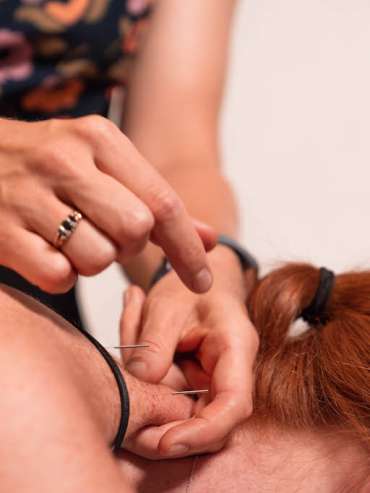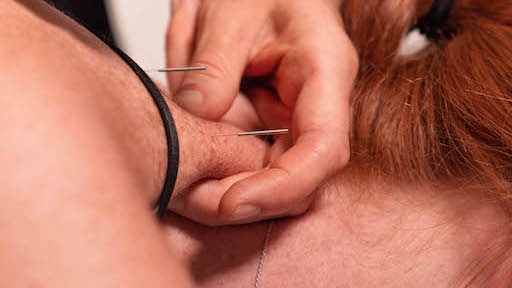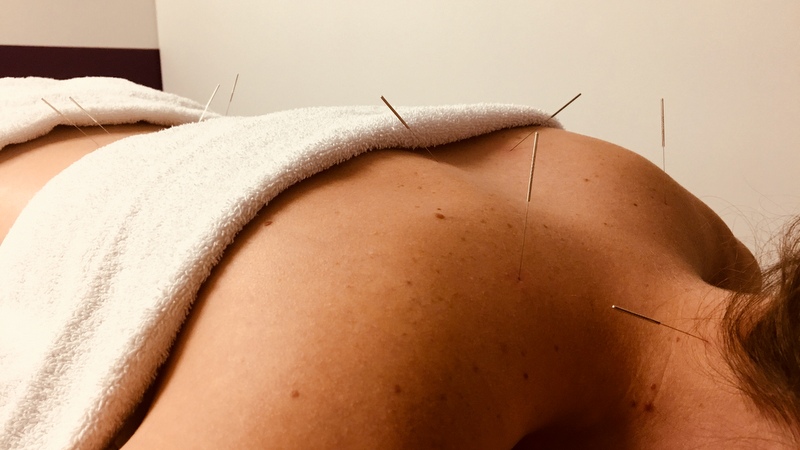By Dr Adam Olarenshaw (Osteopath) |
As an Osteopath, one of the most common questions I get asked is: ‘What is the difference between dry needling and acupuncture?’
Although both therapies involve the insertion of thin, stainless steel needles into the soft tissues, the differences lie in the theory and clinical reasoning behind the needle placement.
How does dry needling work?

The locations chosen for needle insertion often target areas of myofascial tension – fascia is the connective tissue that encases the muscles. Needling is also useful for conditions like shin splints, where needles can be inserted into the periosteum, or outer membrane covering the surface of bones.
Dry needling is sometimes called intramuscular stimulation because the focal invasion caused by the insertion of a needle into soft tissue initially causes the tissue to react. The reaction is promptly followed by a degree of tissue relaxation, which can lead to a reduction in pain.
What sorts of complaints is dry needling helpful for?
Dry needling is really helpful for treating large areas of muscle tension as it is very effective in aiding relaxation. It is also extremely effective for patients who are sensitive to touch or in acute pain because it can release muscle tightness with minimal hands-on therapy and far less discomfort that deep tissue massage techniques.
What is acupuncture?
Acupuncture is commonly used to manage pain, particularly in chronic conditions. It has a long history, and there are a few different theories regarding its origins. Evidence suggests that acupuncture has been practiced for between 2000 and 5000 years. Generally thought to have evolved in China, it has now become a common treatment tool in Traditional Chinese Medicine (TCM).
Acupuncture is based on the belief that a person’s health is highly dependent on the flow of chi (or qi), a vital life force, around the body. Chi is said to travel along twelve distinct pathways called meridians, which link various organs and other parts of the body. It is thought that in a healthy system, chi flows unimpeded along the pathways, while interrupted flows lead to pain and illness.
The locations for the placement of acupuncture needles are chosen to help redirect and restore the body’s flow of chi. By restoring this balance along the correct meridians, acupuncturists aim to improve systemic medical pathologies.
For more information about what’s the difference between dry needling and acupuncture check out our latest blog.
Which therapists practice dry needling?
At MOSIC, a number of our Osteopaths and Remedial Massage Therapists are qualified to perform dry needling. They can use it to address a range of neuromuscular conditions and it can provide excellent results for pain relief, improving range of motion and reducing muscle tension. Our practitioners will assess your complaint on an individual basis and if they feel that dry needling may be effective for your situation, they will present it as one of a range of treatment options.
Dr Adam Olarenshaw is an experienced Osteopath at Melbourne Osteopathy Sports Injury Centre. If you’d like to speak with Adam or any of other practitioners about dry needling, acupuncture or any other concern, you can contact us at any time:
- (03) 9939 1289
- info@melbourneosteopathycentre.com.au
- Book a consultation online


